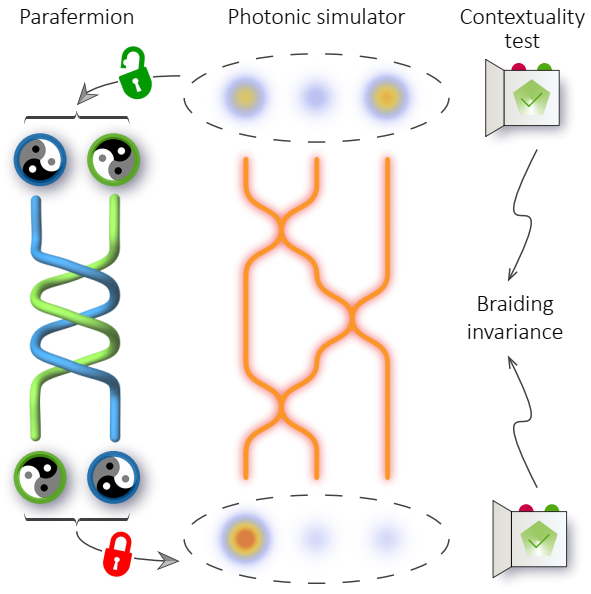USTC Improves Anyonic Photonic Quantum Simulation
A research team from University of Science and Technology of China (USTC) led by academician GUO Guangcan, collaborating with Prof. PACHOS Jinannis from University of Leeds, realized topological quantum computation by the braiding of parafermion zero modes and the magic state distillation. This work was published as the Editor's suggestion in PRX Quantum.
When two identical bosons or fermions are swapped, their wave function picks up an exchange phase; while in a two-dimensional topological system, peculiar “anyons” are allowed. When two non-Abelian anyons are swapped, their state instead undergoes a very specific unitary evolution. It is possible to construct a fault-tolerant quantum gate by anyonic braiding. However, the existence of Majorana zero mode, one of the most famous non-Abelian anyons, hasn't been proven directly.
In this study, the researchers employed a home-made multi-function photonic quantum simulator to demonstrate the quantum statistics and quantum contextuality of the parafermion zero modes. The parafermion zero modes, a naturally generalization of Majorana zero modes, have a threefold degenerate ground state and encode natural immune to decoherence factors such as quasiparticle poisoning.
With a nonlocal mathematical transformation, the researchers encoded a parafermions chain containing two parafermion zero modes into a wave function of photons in a multi-mode Mach-Zehnder interferometer.
Through the interference of photons between different modes and the dissipation of the corresponding excitation modes, they demonstrated that the braiding statistics and topological noise resilience of the parafermion zero modes in the optical quantum simulator. The fidelity of the braiding operation reaches 93.4%.
The braiding of parafermion zero modes only realizes a kind of Clifford gates. To realize the universal quantum computation, magic state distillation can be applied to provide the non-Clifford gates of which the quantum contextuality is the necessary criterion.
The researcher found that in parafermionic systems the quantum contextuality is topologically immune to local noise. Before and after the braiding operation, the quantum contextuality is a conserved quantity. Thus, a parafermionic univerisal quantum computation architecture is possible based on the fault-tolenrant procedures of braiding and magic state distillation.
This work demonstrated the braiding and quantum contextuality of parafermion zero modes, which is the first step toward a physically robust methodology for realizing topological quantum computation.

Photonic quantum simulation studying parafermionic braiding and contextuality (Image by LIU Zhenghao)
Paper link: https://journals.aps.org/prxquantum/abstract/10.1103/PRXQuantum.2.030323
Back
